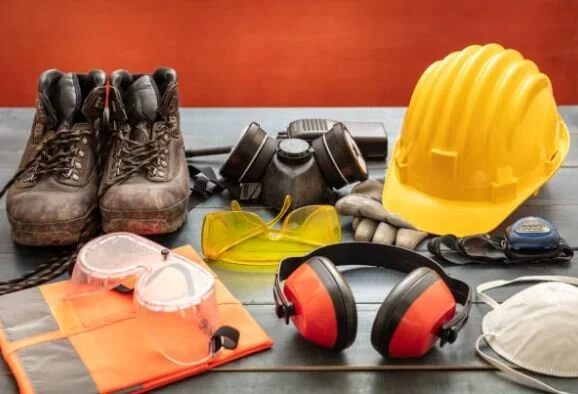The following is a list of the safety equipment that should be worn and/or used by all employees working in sewer manholes at all times, unless stated otherwise.
Read MoreThe following are the proper procedures and general safety precautions that will be followed
before entering a manhole for the purpose of taking flow measurements, performing inspections
or making sewer repairs:
Read MoreThe construction of sewers should be in accordance with standard design, with special attention
to self-cleaning velocities, good alignment, proper spacing of manholes, and adequate provision
for ventilation. These design standards when followed, will provide for a safer work
environment. However, there are several other points of safety that are of major importance.
Read Moreinspected on a regular basis, and are sanitized before and after use. The SCBA training video
will be viewed twice a year by all personnel.
Read MoreThe concentration of the hazard will be monitored before respirator selection and periodically
thereafter to ensure that the correct respirators are being utilized.
Read MoreEmployees will use respirators provided in accordance with training received.
Employees must report any malfunction of a respirator to their supervisor immediately, and that
respirator will be taken out of service to be repaired or replaced.
Read MoreWorkplace violence is any threat, disruptive behaviors, intimidation, physical aggression, or act of violence in the workplace including homicide. Homicide in the workplace is currently the fourth leading cause of death on the job. In 2017 alone, there were 458 deaths on the job due to homicide. According to OSHA, over 2 million people report being victims of workplace violence every year.
Read MoreVison loss and severe eye injuries occur all too often in today’s workplaces. Each day, many people sustain a job-related eye injury that requires medical treatment….
Read MoreThe flu affects most people at some point in their lives. Almost everybody experiences the flu multiple times in their lifetime.
Read MoreThere has been much discussion about silica dust in the past few years. OSHA has issued a regulation to help protect workers from overexposure to this dust. It has been largely unregulated in the past, and because of this, many workers have been faced with overexposure to silica dust. The CDC reports that an estimated 1.7 million U.S. workers are exposed to silica dust on the job.
Read MoreOperating heavy equipment or a motor vehicle is inherently a hazardous task, however, backing up creates more risk for incidents to occur. According to the National Safety Council, backing accidents cause 500 deaths and 15,000 injuries per year. All too often, unnecessary backing is responsible for injuries or property damage incidents. It is important to consider the hazards of backing and what can be done to mitigate these hazards.
Read MoreWe use batteries to power our cars, trucks, tractors, forklifts, construction equipment, and power tools. There are different types of batteries. For example, a lead-acid battery usually uses sulfuric acid to create the intended reaction. Zinc-air batteries rely on oxidizing zinc with oxygen for the reaction. Potassium hydroxide is the electrolyte in common household alkaline batteries. The most common electrolyte in lithium batteries is a lithium salt solution.
Read MoreIndividuals who come to work under the influence of drugs and alcohol are a big concern for many employers across the world. In the United States, it is estimated over 60% of employers conduct pre-employment drug screen. The cost of these tests are anywhere from $20 to $60 a piece. Since employers are willing to spend this amount of money on screening employees many find that the benefits outweigh the costs.
Read MoreEvery single year there are 735,000 Americans who suffer heart attacks according to the CDC. Out of that number, 525,000 of them are first-time heart attack victims. Heart disease and heart attacks are an unfortunate reality in our country.
Read MoreAn important but often overlooked aspect of safety is what we decide to wear each day on the job….
Read MoreSlips, trips, and falls are one of the leading causes of injuries and fatalities in the workplace. According to OSHA, slip, trip, and fall incidents cause 15% of all accidental deaths and are second only to motor vehicle incidents as a cause of fatalities on the job. These types of incidents can result in life-changing injuries to the employees who suffer them. These incidents are also very costly for businesses. HUB reports that the average slip and fall injury costs $20,000.
Read MoreHealth and safety is of primary importance when working in the field. LMK Pipe Renewal
desires that each employee be thoroughly aware of the following preventative measures: Field
workers have an exposure to polluted water and refuse by virtue of the very nature of their work
during the installation of the liners.
Read MoreThe LMK Pipe Renewal safety Committee will provide safety training of the following types.
All employees, as specified are required to receive such safety instructions.
Read MoreLMK Pipe Renewal has made the decision that personal safety takes precedent over company
property in all emergencies. No extreme action should be taken that Threatens personal safety.
Dial 911 in the event of an emergency.
Read More



















